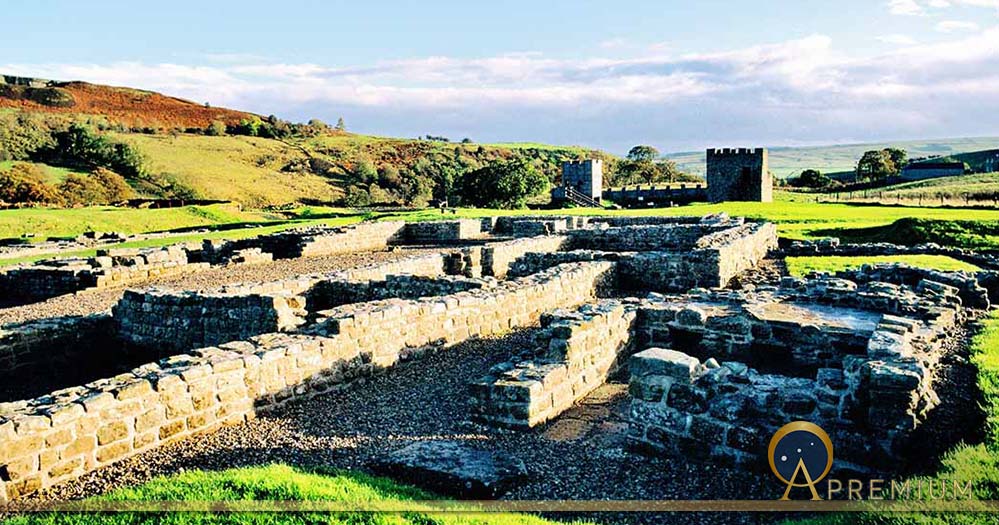Revisiting Vindolanda, The Roman Outpost Of Hadrian’s Wall
Sitting proudly on the line of Hadrian's Wall in northern England, just south of the Scottish border, the Roman fort of Vindolanda has dominated the landscape for nearly 2,000 years. Originally built to guard Stanegate, the literal “stone road” built by the Romans which ran from the River Tyne to the Solway Firth, today it is situated near the village of Bardon Mill. The desolate location must have felt then, and today, a long way from Rome. Vindolanda is one of the most famous Roman sites in England, not just because it is a remarkable Roman site, but also because it has been at the forefront of pioneering archaeology for decades. More is known about the Romans that lived and died at Vindolanda than at any other Roman site in Europe.

Hadian, Agricola and Tacitus – last three on the right - among Roman generals and emperors in this frieze from the Great Hall of the National Galleries Scotland by William Brassey Hole (1897) (Public Domain)
Wooden Forts of Vindolanda
Vindolanda’s long history began in about 85 AD when the earliest forts were built on the site. These early buildings were constructed of turf and wood and today lie four meters (13 feet) below the surface in waterlogged anoxic soil. A year earlier in 84 AD the Roman author Tactius relates how the Roman governor general Agricola defeated a powerful British tribe, the Caledonii, at Mons Graupius in northern England and went on to press into Scotland. That same year however Agricola was recalled to Rome by Emperor Domitian and maintaining Rome’s presence in Scotland became impossible. The army withdrew back to the area of what is now Hadrian’s Wall and it was in this context that the first fort at Vindolanda was constructed.
This first fort was most likely built by the first cohort of Tungrians, an auxiliary unit of about 1,000 men who originally came from Gallia Belgica. The name and presence of their prefect Iulius Verecundus at Vindolanda in around 92 AD has been attested to by archaeological finds. Ten years later in 95 AD this early fort was replaced by a second, built on a larger scale by the ninth cohort of Batavians, men originally from an area around the Dutch-Rhine delta. This fort itself required repairs in 100 AD and was evidently not fit for purpose because when the ninth cohort departed five years later their fort was torn down rather than being repaired again.
Like this Preview and want to read on? You can! JOIN US THERE ( with easy, instant access ) and see what you’re missing!! All Premium articles are available in full, with immediate access.
For the price of a cup of coffee, you get this and all the other great benefits at Ancient Origins Premium. And - each time you support AO Premium, you support independent thought and writing.
Rebecca Batley has a Bachelor’s degree in archaeology (University of Wales) and a Master’s degree in Classics. In the field she has worked on sites dating to the Bronze Age, Iron Age, Romano-British, Roman, Medieval, Tudor, Georgian and modern periods. Employed by the Louvre Museum, she researched and excavated at sites in Egypt, Syria, and Israel. She works at the Military Intelligence Archive to help to prepare World War One records for cataloguing and digitalisation and she is a part time History tutor.
Top Image: Vindolanda Roman fort on Hadrians Wall, Northumberland, England. Walls of the commanders residence (David Matthew Lyons / Adobe Stock)
By: Rebecca Batley


















